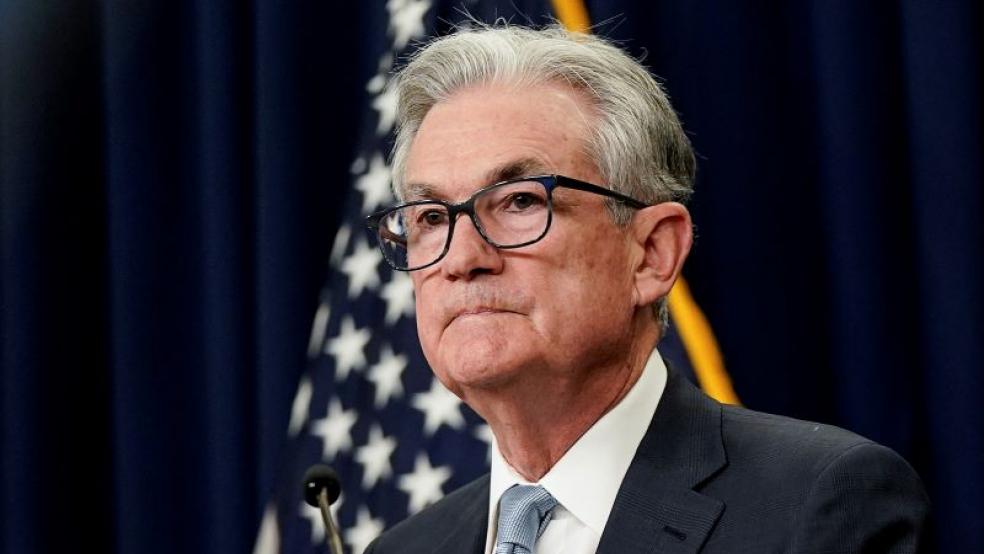In a sign that its two-and-half-year battle against inflation has reached a major inflection point, the Federal Reserve on Wednesday slashed its key interest rate by half a percentage point, its first rate reduction since 2020.
In a statement, the rate-setting Federal Open Market Committee said it “has gained greater confidence that inflation is moving sustainably toward 2 percent,” with the risks to achieving the goals of the central bank’s dual mandate — price stability and maximum employment — now roughly in balance.
Fed Chair Jerome Powell told reporters that the U.S. economy is in good shape overall, even as the central bank dropped its benchmark federal funds rate to a range between 4.75% and 5%, adjusting its policy to bolster the labor market.
“The labor market is actually in solid condition, and our intention with our policy move today is to keep it there,” Powell said. “You can say that about the whole economy. The U.S. economy is in good shape. It’s growing at a solid pace, inflation is coming down, the labor market is in a strong [place]. We want to keep it there. That’s what we’re doing.”
The FOMC voted 11 to one in favor of the unusually large rate cut. The lone dissenter, Fed Governor Michelle Bowman, said in late August that she is worried about a possible resurgence of inflation. “I still see some upside risks to inflation as supply conditions have now largely normalized and any further improvements to supply seem less likely to offset price pressures arising from increasing geopolitical tensions, additional fiscal stimulus, and increased demand for housing due to immigration,” she said at a meeting of bankers.
Looking ahead, projections made by Fed officials show they expect more rate cuts in the coming months. Most of the 19 FOMC members predicted that interest rates would be lower by the end of the year than they are now, with nine projecting another 50 basis points in cuts, seven predicting just one more cut of 25 basis points, and one foreseeing 75 basis points in cuts. The remaining two thought interest rates would hold steady for the rest of the year.
In the longer run, Fed officials see interest rates settling in a range between 2.5% and 3.5%, higher than before the pandemic. “We’re probably not going back to that era where there are trillions of dollars of sovereign bonds being issued at negative rates,” Powell said. “My own sense is that we’re not going back to that.”
White House cautiously celebrates: The Fed’s decision is good news for a White House that has been dogged by persistent inflation for most of its term. Vice President Kamala Harris cautiously noted the Fed’s change in policy, while emphasizing that she still sees work to be done on prices. “While this announcement is welcome news for Americans who have borne the brunt of high prices, my focus is on the work ahead to keep bringing prices down,” she said in a statement.
What the experts are saying: Most economists applauded the rate cut, with some expressing concern that the Fed may have waited too long amid signs of fatigue in the jobs market. “The economy is still adding up to be strong in third quarter but the labor market is weak,” KPMG chief economist Diane Swonk said on social media. “Hence, cut now to prevent further weakness and avert a recession. Even if employment slips into the red in a month ... we will likely avoid recession, as we will have a tailwind of rate cuts to keep [the] economy going.”
Still, there was no denying the rosy outlook provided by Fed officials. Jason Furman, who led the Council of Economic Advisers in the Obama administration, said the economic projections provided by members of the FOMC are “just about the closest thing to a ‘Mission Accomplished’ banner you can imagine them unfurling,” even though Powell explicitly said he was not doing that just yet. Fed officials foresee “2% inflation going forward with no slowdown in economic growth and the unemployment rate staying low and falling,” Furman said, indicating that, in their view, the battle against inflation appears to be over.
University of Michigan economist Justin Wolfers summed up a typical perspective on the news: “The economy is getting back to normal, inflation is back down to normal, and so now rates are heading back to normal,” he wrote on social media. “The right decision, albeit a tad late.”




